|
|
|
|
Family: Ranunculaceae
red baneberry
|
Leaf blade: leaflets abaxially glabrous or pubescent. Inflorescences at anthesis often as long as wide, pyramidal. Flowers: petals acute to obtuse at apex; stigma nearly sessile, 0.7-1.2 mm diam. during anthesis, much narrower than ovary. Berries red or white, widely ellipsoid, 5-11 mm; pedicel dull green or brown, slender, 0.3-0.7 mm diam., thinner than axis of raceme. Seeds 2.9-3.6 mm. 2 n = 16. Flowering spring-early summer. Mostly deciduous forests, also mixed coniferous forests, open pine or spruce woodlands, swales, stream banks, and swamps; 0-3500 m; Alta., B.C., Man., N.B., Nfld., N.W.T., N.S., Ont., P.E.I., Que., Sask., Yukon; Alaska, Ariz., Calif., Colo., Conn., Idaho, Ill., Ind., Iowa, Maine, Mass., Mich., Minn., Mont., Nebr., Nev., N.H., N.J., N.Mex., N.Y., N.Dak., Ohio, Oreg., Pa., R.I., S.Dak., Utah, Vt., Wash., Wis., Wyo. Actaea rubra is part of a circumboreal complex and is very similar to the black-fruited European species A . spicata Linnaeus, with which it is sometimes considered conspecific. The western North American plants of A . rubra have been called A . arguta and were distinguished on the basis of their smaller berries, more pubescent leaves, and narrow, more dissected leaflets. Those distinctions, however, are weak; specimens from the West often have fruits and leaves similar to those of plants from the East. A thorough study of A . spicata in the broad sense, on a worldwide scale, is needed to resolve the delimitation of taxa within this complex. Plants with white fruit, sometimes distinguished as Actaea rubra forma neglecta (Gillman) H. Robinson, are frequent and are more common than the red-fruited form in many localities. Native Americans used various preparations made from the roots of Actaea rubra medicinally to treat coughs and colds, sores, hemorrhages, stomachaches, syphilis, and emaciations; preparations from the entire plant as a purgative; and infusions from the stems to increase milk flow. It was also used in various ceremonies (D. E. Moerman 1986).
Much like no. 2 [Actaea alba (L.) Mill.]; lfls commonly hairy at least on the veins beneath; pet spatulate to obovate; ovary wider than the stigma, narrowed above to a short beak; fruiting pedicels slender, 0.4-0.7 mm thick; fr red, rarely white; 2n=16. Rich woods; circumboreal, in Amer. from Lab. and Nf. to Alas., s. to Conn., n. N.J., n. Ind., Io., and Ariz. May-July. (A. eburnea; A. erythrocarpa; A. spicata var. rubra; A. alba of some authors, misapplied) Gleason, Henry A. & Cronquist, Arthur J. 1991. Manual of vascular plants of northeastern United States and adjacent Canada. lxxv + 910 pp. ©The New York Botanical Garden. All rights reserved. Used by permission. General: Perennial, 10-80 cm tall; stems erect, stout, branching in the inflorescence; herbage glabrous or sparsely puberulent; caudex 1 cm thick. Leaves: Cauline, alternate, ternately to pinnately compound, the leaflets ovate to narrowly elliptic, 0-3 lobed, glabrous to pubescent, margins sharply cleft and irregularly dentate to serrate; blades petiolate. Flowers: Inflorescence an open, terminal raceme; flowers bilateral, 18-50 mm long from tips of lower (pendent) sepals to top of hood, blue, occasionally white or cream- colored; sepals 5, petal-like, the pendent sepals 6-16 mm long, hood conic, hemispheric, or crescent-shaped, 11-34 mm long from receptacle to top of hood; pistils 3; flowers June-September. Fruits: Berry, broadly ellipsoid, 5-11 mm wide, red or white at maturity; seeds several; pedicels dull green to brown. Ecology: Deciduous forests, coniferous forests, woodlands, streambanks, wooded ravines; 2000-3200 m (6500-10500 ft); In Arizona it is found in Apache, Cochise, Coconino, Graham, and Pima counties; Canada, eastern, north-central, western, and southwestern U.S. Notes: Previous treatments have called western plants Actaea arguta, as distinguished by their pubescent leaves, narrowly dissected leaflets, and smaller fruits. However, these distinctions are weakly supported and the species have been lumped into A. rubra in current treatments. Editor: Springer et al. 2008 |
|
|
|


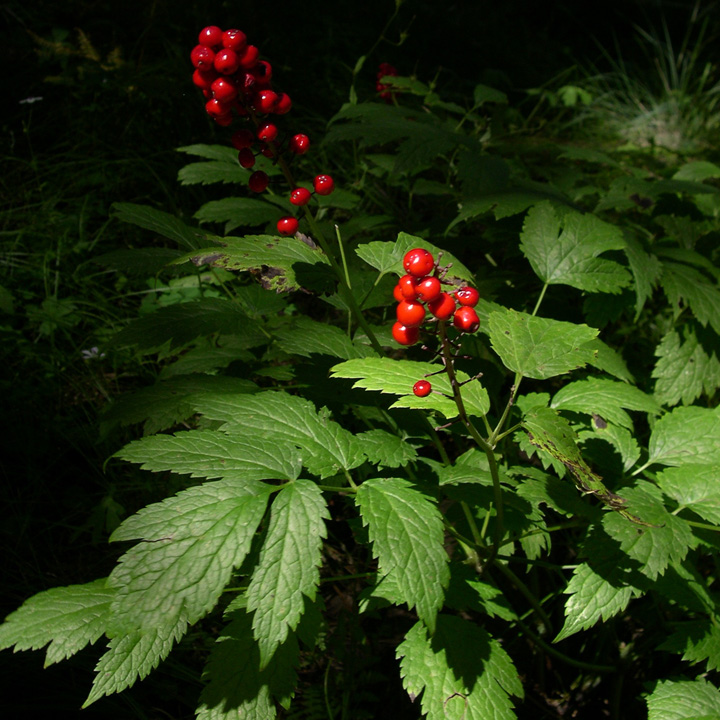
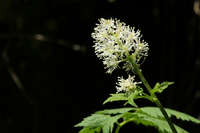
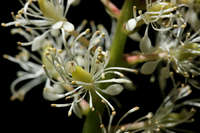
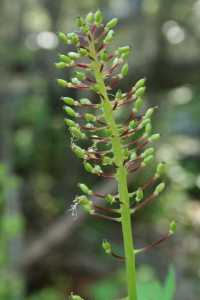
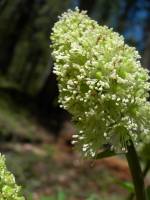


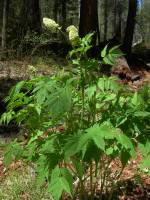

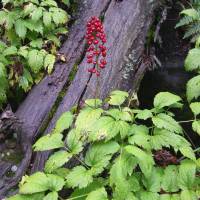

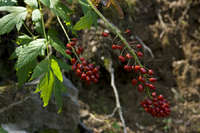
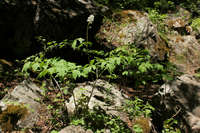
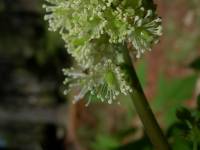
-m_tn.jpg)